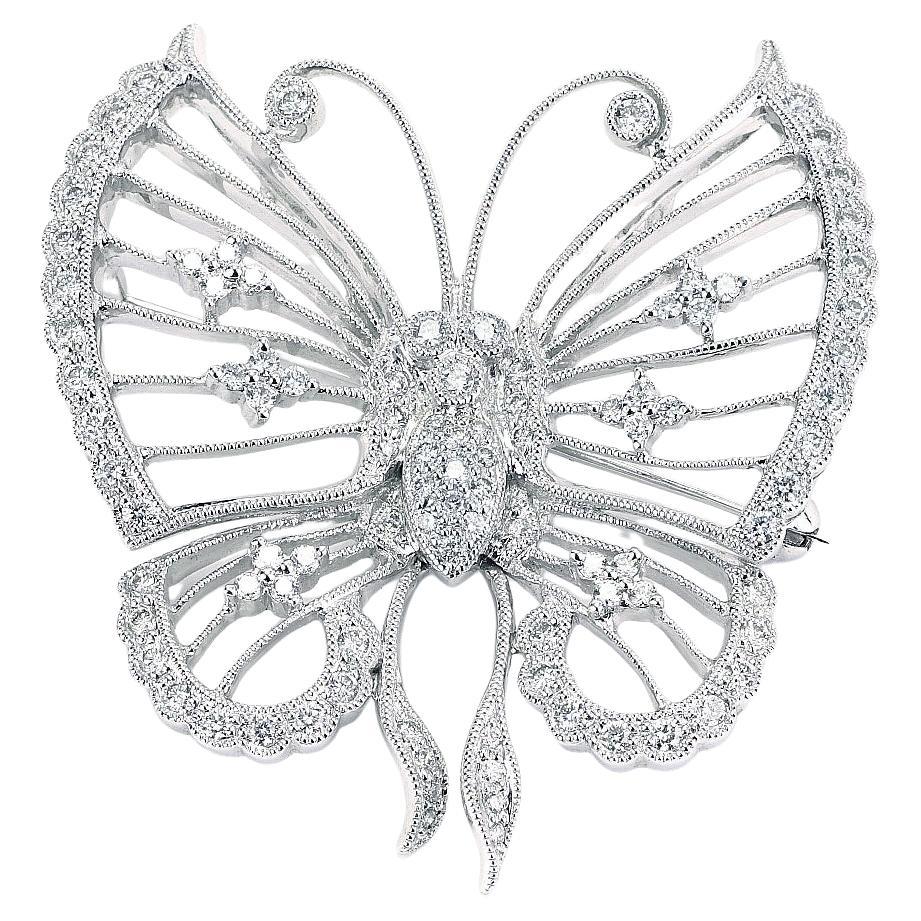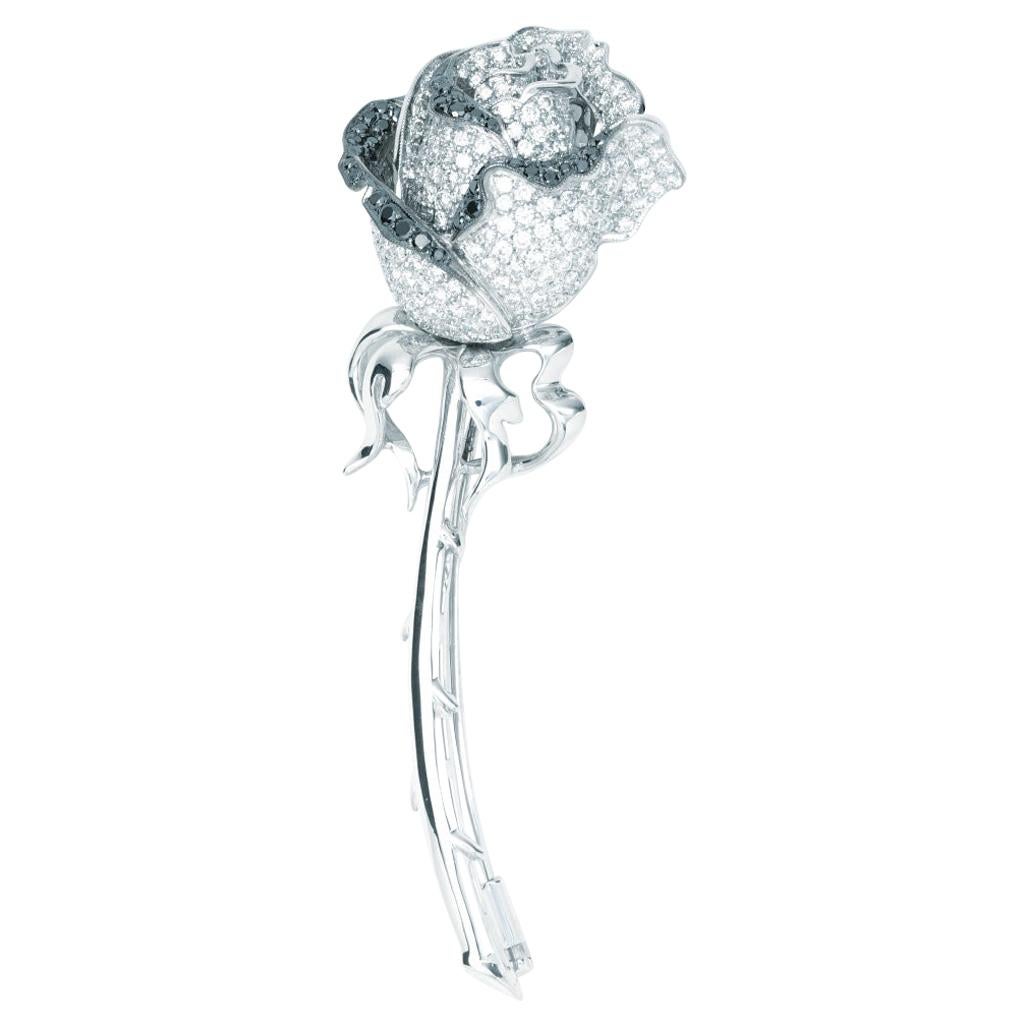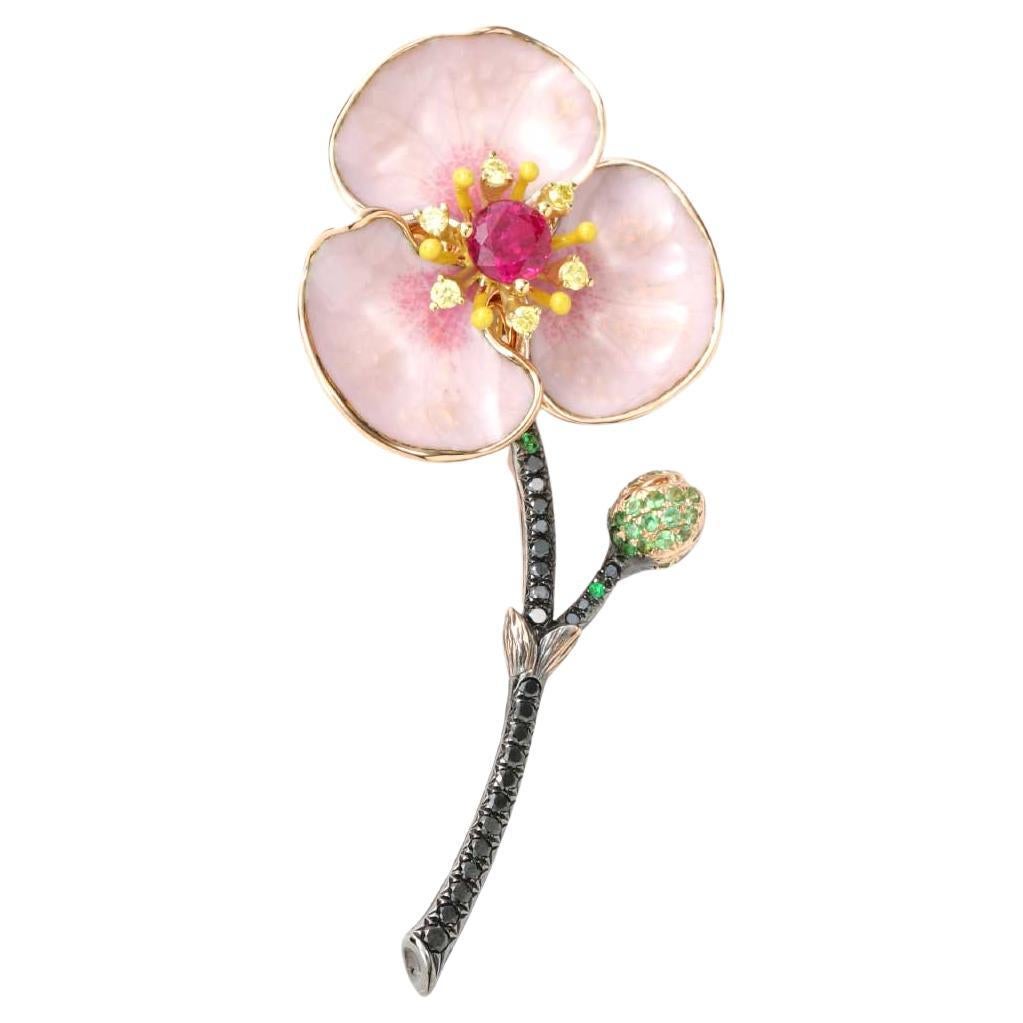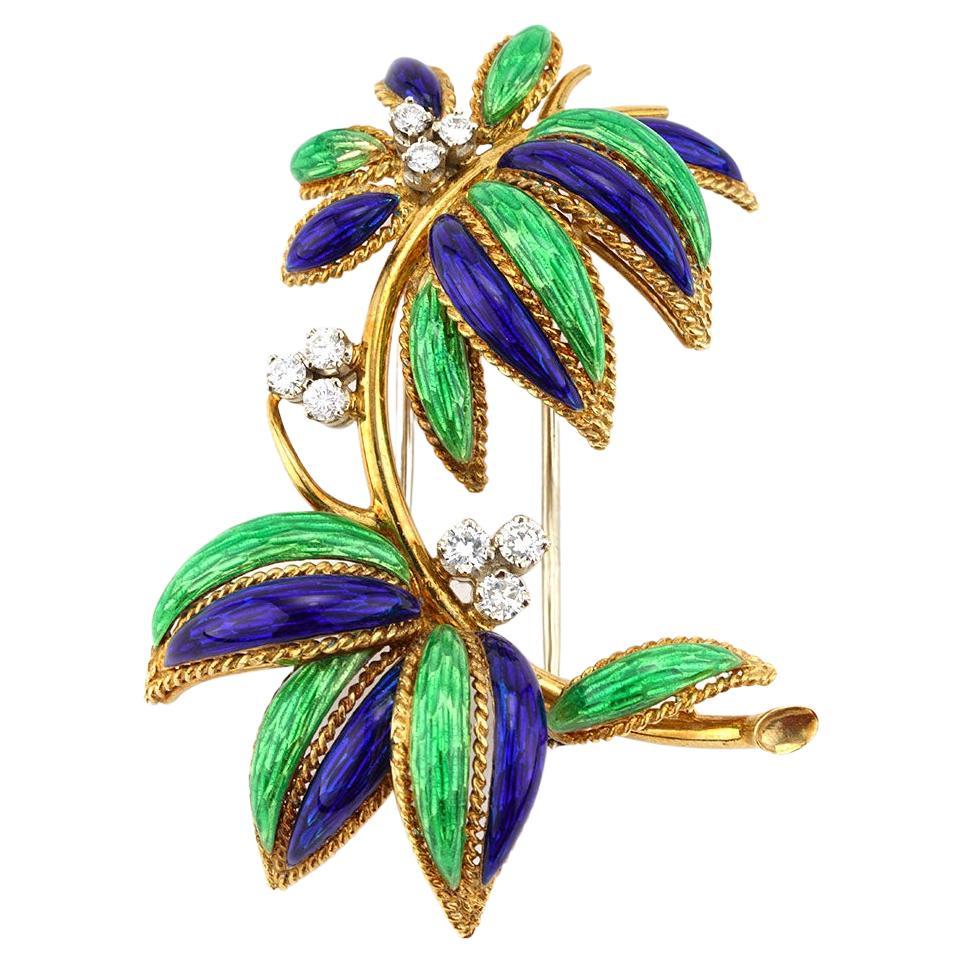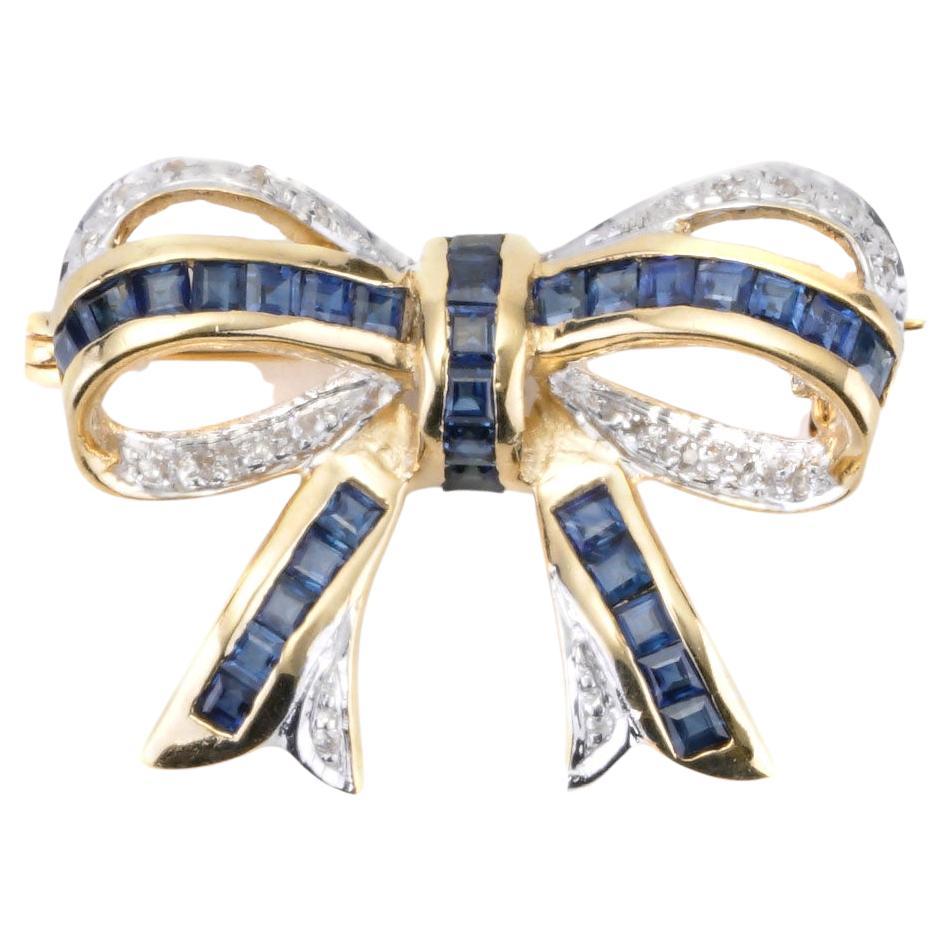Items Similar to Margaret de Patta Silver and Lapis Brooch 1947-1950
Want more images or videos?
Request additional images or videos from the seller
1 of 7
Margaret de Patta Silver and Lapis Brooch 1947-1950
About the Item
It seems that we are in a new age for the brooch, and Portman Gallery is pleased to offer this truly museum-quality example by Margaret de Patta from her most important period. I would be happy to come show this to you anywhere in the 5 boroughs of NYC; possibly elsewhere!
I never thought that a work by Margaret de Patta would pass through my hands. They are simply too hard to find. When they sell at auction, they soar. When they appear in the fair booths of the esteemed artist jewelry dealers, they tend to end up in museums. Especially when they are from this period — 1947-1950. (See my Instagram post for photos of similar brooches in the collections of the Montreal Museum of Fine Arts, the Museum of Art & Design, and the Brooklyn Museum). I can see almost the whole 20th century in these works, and everything Margaret de Patta was obsessed by: the Bauhaus diaspora, the American and Organic Modern, California, Photography, Kinaesthesia, Architecture. And while I love that her work is a curator’s favorite, it also makes me a little sad to see de Pattas encased in airless vitrines all over the country! In fact I’ve never seen anybody wearing one. I’m going to wear it to a bunch of parties, and I’m going to take the subway to get there, and if it survives, it will be for sale.
***
Biographical Essay, National Gallery of Canada, sourced April 2, 2024
Best known for her ground-breaking work as a jewellery designer, the American artist Margaret De Patta was also a talented ceramicist and photographer. Her photograms – unique photographic prints created by placing objects on sensitized paper and then exposing them to light – are an important link between photography and the decorative arts of the 20th century and are significant examples of the legacy of Constructivism and the Bauhaus style. In 2017, the National Gallery of Canada acquired two of De Patta’s photograms for the national collection.
Margaret De Patta was born to Hal and Mary Strong in Tacoma, Washington, in 1903. The eldest of three daughters, De Patta grew up in San Diego, where she began her art education at the age of eighteen when she started attending classes at the San Diego School of Art in 1921. She continued her studies in painting and sculpture at the California School of Fine Arts in San Francisco from 1923 to 1925 and won a scholarship to attend the Art Students League in New York where she studied from 1926 to 1929.
Returning to California in October 1928, De Patta married Salvatore “Sam” De Patta a manager in the hat department of Roos Brothers, an upscale clothing store in San Francisco. Several unsuccessful attempts at finding a wedding ring that would appeal to her taste led her to seek out the metalwork artist Armen Hairenian, who would work with her and help her design her own ring. The creation of this ring was her first foray into the world of jewellery fabrication.
In the 1930s De Patta and her husband Sam moved to San Francisco, first residing on Capra Avenue and then on Laidley Street, where she continued to design and manufacture jewellery, working out of her kitchen studio. It was also during this period that De Patta began experimenting with light and movement, key elements in her work. Around 1939 she worked with the lapidarist Francis Sperisen, developing an innovative technique of stone-cutting, called “opticuts”, that created the illusion of movement within the stones.
De Patta’s interest in photography seems to have been sparked by a lecture given by László Moholy-Nagy at the 14th annual convention of the Pacific Arts Association in the spring of 1939. As part of his presentation, Moholy-Nagy showed examples of photograms – some made by him and others by his students at the New Bauhaus School in Chicago (later known as the School of Design). The photogram process was known to photographers since the medium’s earliest days, but Moholy-Nagy pushed it to new heights, stating in 1943 in the American Annual of Photography that “Cameraless pictures, photograms, however, bring a completely new form of space articulation. It no longer has anything to do with the record of an existing space (or spacetime) structure.”
De Patta was inspired by both Moholy-Nagy’s art and its philosophical underpinnings, and she decided to study with him, first taking courses at a summer school that he taught at Mills College in Oakland in 1940 and later that autumn, in Chicago at the Institute of Design, for the 1940-41 academic year. Moholy-Nagy’s influence on De Patta’s efforts in photography can be seen in her photograms produced mainly between 1939 and 1940. These images are finely tuned experiments that explore the limits of texture, transparency and form. In one of the photograms now in the Gallery’s collection, she has placed a stethoscope on the sensitized photographic paper, overlapping it with glass test tubes. She then employed a focused light source, most likely a small flashlight, which she moved across the sensitized paper in a sweeping fashion, creating shapes through the movement of light. Moholy-Nagy coined the term “luminograms” for these photographic experiments with directed light.
In 1947 De Patta collaborated with Milton Halberstadt, a former fellow photographer and School of Design student, to create a photogram that illustrates her interest in the “problem” of movement. A pin, a small kinetic sculpture made from silver, coral and malachite known as the Three Position Pin, was placed onto a sheet of photo-sensitive paper and then slowly moved in a circular direction, exposing the paper and pin to a series of light exposures, resulting in a dynamic and layered image.
Once again living in San Francisco in 1941, De Patta began to produce jewellery based on the Bauhaus design aesthetic. She divorced her first husband, and then embarked on a major renovation of her home at 21 Laidley Street. In 1946, she married Eugene Bielawski, a fellow artist and teacher at the School of Design in Chicago. De Patta and Bielawski began collaborating on a line of modernist jewellery that could be collected by jewellery lovers of more modest means. At about the same time, the couple purchased a farmhouse in Napa, California, where they established their company Design Contemporary and where they welcomed students and friends for lively discussions about art and social justice.
De Patta and Bielawski also both taught at the California Labour School in San Francisco. One of twenty female teachers at the school, it was De Patta who set up the school’s art section, modeled on the teachings and training of the Bauhaus. The school was supported by various unions and other organizations, and offered courses in a variety of subjects, such as industrial arts, labour organization, journalism, economics and music. In 1948 the CLS was placed on the Attorney General’s list of subversive organizations, just after De Patta and Bielawski were blacklisted.
In 1951 De Patta became one of the founding members – and the first director – of the Metal Arts Guild, an organization dedicated to advancing craft of metalwork and the art of modernist studio jewellery. The guild organized courses and workshops for artists and helped to support them with the exhibition and sale of their works.
De Patta’s modernist jewellery designs frequently appeared in the pages of Craft Horizons and California Arts and Architecture, as well as in the 1956 publication Shaping America’s Products. These publications had a wide reach and influenced the work of other artists, including Haida artist Bill Reid, as discussed by scholar and curator Gerald McMaster. According to Reid’s biographer Doris Shadbolt, De Patta’s work and career were a model for him at the beginning of his career as an artist, and he “envisioned a future as a contemporary jeweller like Margaret De Patta.”
The sculptor Ruth Asawa and photographer Imogen Cunningham were part of De Patta’s circle of friends. Their friendship resulted in an art exchange, with De Patta creating a pin for Cunningham and, in turn, receiving a portrait of herself posed in front of a hanging wire sculpture made and given to her by Asawa (in exchange for a piece of De Patta’s jewellery).
In describing her method of creating, De Patta told an interviewer for Design Quarterly in 1955 that: “I find work problems as set for myself fall into these main directions: space articulation, movement to a purpose, visual explorations with transparencies, reflective surfaces, negative positive relationships, structures and new materials. A single piece may incorporate one or many of these ideas. Problems common to sculpture and architecture are inherent in jewelry design, i.e.–space, form, tension, organic structure, scale, texture, interpenetration, superimposition and economy of means–each necessary element playing its role in a unified entity.” Her jewellery, photographs, paintings and sculptures have been exhibited at Tate Modern and Victoria & Albert Museum, London, and the Museum of Arts and Design, New York, among others. Today, her work is represented in private and public collections across North America, with significant holdings both at the Oakland Museum of California and the Archives of American Art, Smithsonian Institution.
Tragically De Patta died by suicide at the age of 61 in 1964. The Oakland Museum has mounted two retrospective exhibitions of De Patta’s work – one in 1976, and the other in 2012 in collaboration with the Museum of Arts and Design in New York and curated by Ursula Ilse-Neuman.
De Patta was an important catalyst for the recognition and promotion of the art of modernist and studio jewellery in America. In addition to expanding the vocabulary of jewellery, photography, metalwork and ceramics, she also played a prominent role in advancing the efforts to establish economic security through the formation of the Metal Arts Guild and in creating “wearable sculpture” that could be acquired by collectors of more modest means.
- Lori Pauli
- Creator:
- Metal:Silver
- Stone:Lapis Lazuli
- Stone Cut:Bead
- Weight:0.25 t oz
- Dimensions:Height: 0.4 in (10 mm)Width: 1.97 in (50 mm)Depth: 0.4 in (10 mm)Length: 2.92 in (74 mm)
- Style:Modern
- Place of Origin:United States
- Period:Mid-20th Century
- Date of Manufacture:1947
- Condition:Wear consistent with age and use. Light surface scratching. Tarnish to underside.
- Seller Location:New York, NY
- Reference Number:1stDibs: LU3616222494202
About the Seller
5.0
Vetted Seller
These experienced sellers undergo a comprehensive evaluation by our team of in-house experts.
1stDibs seller since 2023
- ShippingRetrieving quote...Ships From: New York, NY
- Return PolicyA return for this item may be initiated within 3 days of delivery.
More From This SellerView All
- Louise Nevelson Pendant Necklace, Black Painted Wood Assemblage SculptureBy Louise NevelsonLocated in New York, NYPortman Gallery is proud to offer this unique, fully documented Louise Nevelson work, a small sculpture pendant necklace of latex-painted wood, highlig...Category
Vintage 1980s American Post-War Pendant Necklaces
MaterialsBrass
- Claude Lalanne silver gilt “Collerette” braceletBy Claude LalanneLocated in New York, NYPortman Gallery (Brooklyn, NY) is proud to offer this bracelet by Claude Lalanne in gilt silver, a somewhat rare material in her jewelry oeuvre, number 11 from the edition of only 50...Category
Late 20th Century French Post-War Cuff Bracelets
MaterialsSilver
You May Also Like
- 1.11 CTTW Diamond Butterfly Milgrain Pin BroochLocated in Chicago, ILThis pin weighs 9.6 DWT (approx. 14.93 grams). It contains 97 round G color and VS clarity diamonds weighing 1.11 CTTW. Dimensions: 1.5" X 1.5".Category
Late 20th Century Art Deco Brooches
MaterialsDiamond, 18k Gold, White Gold
- Le Vian Black and White Diamond Rose Pin White GoldBy Le VianLocated in Chicago, ILPreviously-owned Levian Black and White Diamond Rose Collection pin. The pin is 3 inches in length, made of 18K white gold, and weighs 12.70 DWT (approx. 19.75 grams). It also has 37...Category
Early 2000s Unknown Brooches
MaterialsDiamond, Black Diamond, 18k Gold
- Art Deco 1.20 CTTW Pearl, Ruby, And Emerald Pin Brooch In 14K Yellow GoldLocated in Chicago, ILThis pearl, ruby, and emerald pin is made of 14K yellow gold. It contains a round white pearl , round green emeralds weighing 0.50 CTTW, and round red rubies weighing 0.70 CTTW.Category
Mid-20th Century Art Deco Brooches
MaterialsEmerald, Pearl, Ruby, 14k Gold, Yellow Gold
- Diamond, Ruby, Tsavorite And Enamel Flower Pin In Multi Tone GoldLocated in Chicago, ILThis Enamel pin is made of 18k Rose Gold . It contains a round ruby weighing 0.55 CT, round green tsavorites weighing 0.32 CTTW, round multi color, diamonds weighing 0.31 CTTW, round...Category
Late 20th Century Art Nouveau Brooches
MaterialsDiamond, Ruby, Tsavorite, Gold, Enamel
- Blue And Green Enamel And Diamond Tree Motif Pin In Yellow GoldLocated in Chicago, ILThis tree motif pin weighs 15.20 DWT (approx. 23.64 grams). It contains 9 round G color and VS clarity diamonds weighing 0.60 CTTW.Category
Late 20th Century Art Nouveau Brooches
MaterialsDiamond, Yellow Gold, Enamel
- 1.60 CTTW Antique Sapphire & Diamond Bow Pin In 14K Yellow GoldLocated in Chicago, ILThis antique sapphire and diamond bow pin is made of 14K yellow gold. It contains square sapphires weighing 1.50 CTTW, single cut I-J color and I1 clarity diamonds weighing 0.10 CTTW...Category
Late 20th Century Art Nouveau Brooches
MaterialsDiamond, Sapphire, 14k Gold, Yellow Gold
